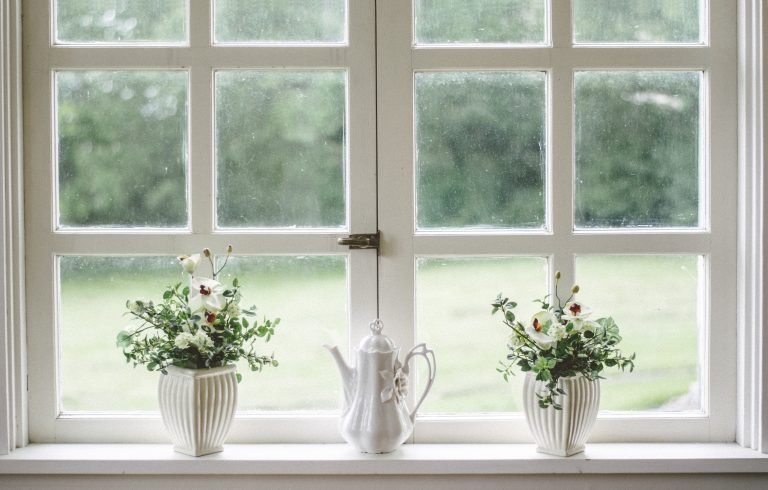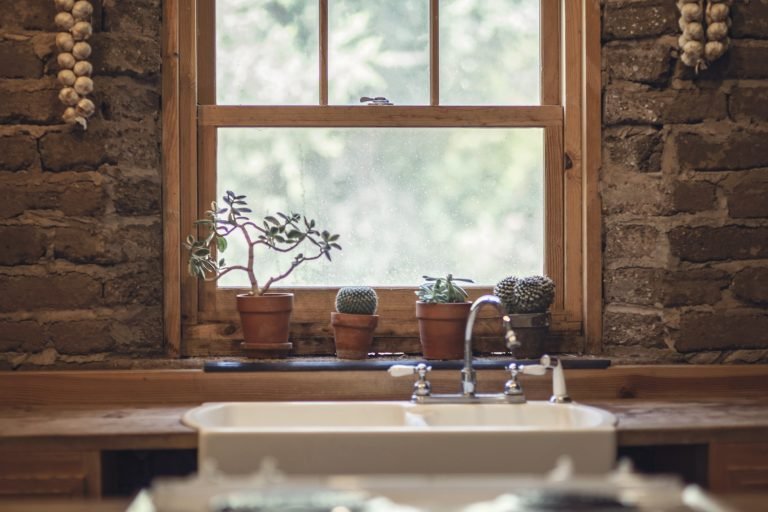Sash Window Restoration – Winslow Ltd.
Restoration – Conservation – Preservation
A brief history of the Sash Window
The earliest form of the sliding sash window dates back to the last quarter of the seventeenth century. It remained the most popular type of window in Britain for the next two hundred years or so. Its origin is a matter of heated debate: Being English or Dutch. The original form of the sash window consisted of two overlapping glazed frames or sashes which slide vertically. Within a few years of its invention, the more common – and easily recognizable – double hung sash window, became the standard model. This consisted of traditional two sliding sashes.
By design, sash windows are sophisticated, as the frames should be suspended on weighted cords (or chains in some cases) through pulleys so that they will remain in any required position. The key to this sophisticated design relies on all parts being in perfect condition. The correct weights, the free moving pulleys, the right length of cord or chain which suits both the weight of the sash window and fits within the pulleys. The frames themselves should be square and fit perfectly within their housing between the staff beads and the parting beads. Think of it as a synchronised movement – one part is out and the rest will jam!
The majority of sash windows in the UK falls into three distinctive eras : Georgian, Victorian and Edwardian. Each is distinctive in design with a few variations depending in general on the social status and wealth of the person who commissioned them when they were being built. The main distinctive variation on all designs and shapes, is the horizontal sliding sash window. These are found in Yorkshire and the West Country in particular and were largely restricted to modest dwellings. They were cheaper to build and being horizontally sliding windows, required no sophisticated counter-weight system.
Georgian Sash Windows

This is the earliest form of sash windows as we recognise them to this day. They are characteristic with their thick wooden astragals “or glazing bars”. They range from sixteen to twenty four almost square panes. As the Eighteenth Century progressed, the classic 6 over 6 sash windows became the accepted norm. The proportions of the sash window are largely responsible for the elegant appearance of Georgian properties.
The width and status of a particular window determined the height of the opening. A window on the main floor is usually a double square , meaning it is twice as high as it is wide. The height of a bedroom window was normally one and a quarter times its width, whereas windows at attic level, where the majority of the servants rooms were situated, tended to be square.
The late Georgian houses were often built with semi-circular head or elliptical-head windows. Early Georgian windows were made with thick square ovolo mouldings. The astragal and hollow was popular from about the 1730s, followed in quick succession by the sash ovolo and lamb’s tongue mouldings which all remained in use well into the Nineteenth Century.
Victorian and Edwardian Sash Windows

Georgian window styles did not suddenly change as the period drew to a close. However, the prevailing feature that distinguished Victorian windows from Georgian ones was the larger panes of cheap mass-produced glass, supported by fewer ovolo glazing bars. Four over Four, Two over Two, and eventually One over One are all typical Victorian window pane arrangements. Even earlier windows were frequently “modernised” by removing the original glazing bars in order to install larger sheets of glass, which is why you find horned windows in some Georgian Buildings.
The elemination of glazing bars did put additional strain on the relatively slim meeting rail of the upper sash, especially on the joint at each end of the rail. From about 1840, this joint was extended to include a wedged through tenon, which necessitated extending the vertical stile to reinforce the joint. This extension, known as the “horn”, was either bevelled or moulded. With their characteristic enthusiasm for anything decorative, the Victorians used a much greater variety of glazing bar arrangements than their Georgian predecessors.
The sash window is a complicated piece of joinery, yet it is designed in such a way that it can be easily dismantled when it is necessary to carry out repairs or maintenance.
